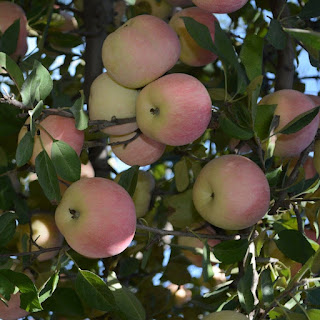Guava (Amrood)
Guava a Species of Guavas
Common Name
Amrood
Lemon Guava
Guava
Yellow Guava
Botanical Name
Psidium Guajava
Information
Guava (Psidium guajava) is a fruit-producing evergreen shrub that grows natively in the Caribbean region and South America. Guava attracts the honey bee and other insects. Guava fruit is edible and guava wood is used for smoking meat.
Name Story
Common guava, Guava
The term guava was derived from the Arawak word "guayabo", meaning "guava tree". It refers not only to Psidium guajava, commonly known as guava in the English language but also to its fruit and several other shrubs and trees of the genus Psidium..
Interesting Facts
Guava is famous for its beautiful and colorful flowers. Especially as spring goes away and so does the blooming season, the flaming red flowers leap onto the branches and are captivating.
Characteristics
Plant Type
Tree, Shrub
Lifespan
Perennial
Bloom Time
All year around
Plant Height
26 to 43 feet
Spread
20 to 43 feet
Flower Size
0.4 to 0.8 inch
Habitat
Disturbed places, pastures, plantations, other similar habitats
Flower Color
WhiteYellow
Leaf Color
Green
Fruit Color
GreenYellow
Stem Color
Green
Conditions Requirement
Difficulty Rating
Guava is super easy to take care of, with resistance to almost all pests and diseases. It is a perfect option for gardeners with brown thumbs.
Sunlight
Full sun
Hardiness
20 ℉
Hardiness Zones
9 to 11
Soil
Clay, loam, sand; well drained; slightly acidic, neutral
Care Guide
Water
When initially planted, Guava should be watered regularly until established. After establishment, it may be watered deeply and allowed to dry thoroughly before watering again in monthly intervals. Guava prefers well-drained soils but will grow in sodden soils that are subject to flooding seasonally.
Fertilization
Fertilization once in spring.
Pruning
Shape the plant every 2 months during the growing season.
Planting Time
Spring, Autumn
Harvest Time
Autumn, Summer
Propagation
Cutting, Layering
Scientific classification
Genus
Psidium - Guavas
Family
Myrtaceae - Myrtle
Order
Myrtales - Myrtle order, Myrtles, evening primroses, and allies
Class
Magnoliopsida - Dicotyledons, Dicots, Eudicots
Phylum
Tracheophyta - Vascular plants, Seed plants, Ferns, Tracheophytes
Plant Distribution
Guava is native to Asia and Australia but escaped cultivation and is now invasive in Hawaii, southern Africa, New Zealand, Tonga, New Caledonia, Fiji, the Galapagos Islands, and French Polynesia. This tree invades by forming dense thickets in disturbed areas, riparian habitats, shrublands, and the understories of forests. These thickets compete with and push out native vegetation.
The key to guava's success is that it thrives in a variety of habitats and climates. This tree grows in both dry and humid climates, is drought tolerant, and is not picky about soil conditions. Despite being invasive, guava is beloved for its fruit and is often cultivated in gardens, which only solidifies its presence.
Uses
Economic Value
Common guava can be used to make fruit sauce, pudding and other foods.
Garden Use
Guava can be planted in backyard gardens as an ornamental or fruit tree. Its small size and popular, brightly colored, sweetly tasty fruit make it a popular choice. It grows well alongside citrus trees, and Marigold, Borage, and Comfrey do well nearby.





Comments
Post a Comment